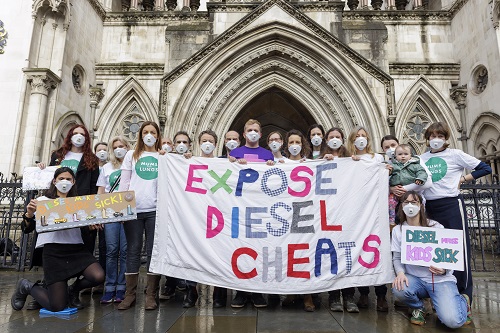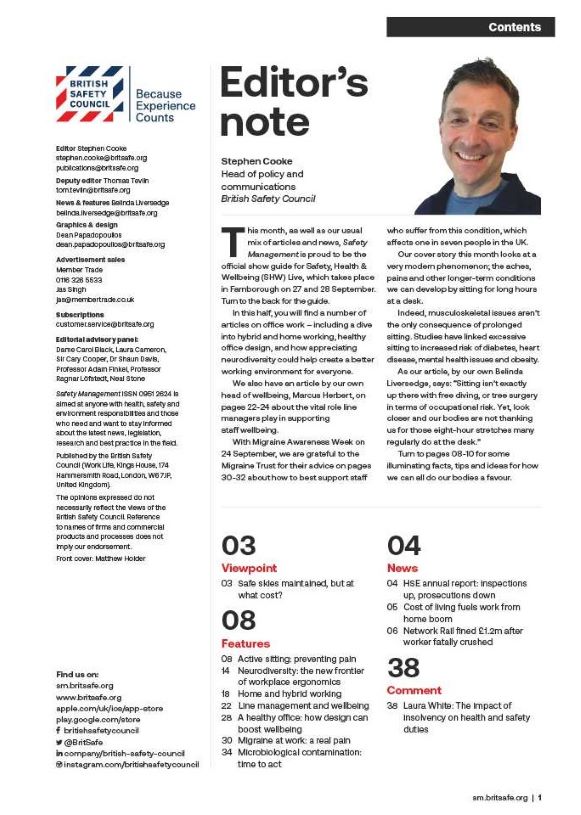Workers across the world are increasingly being exposed to excessive heat with serious implications for their safety and health. It is therefore vital that governments, employers and workers’ organisations develop, share and implement practical and low-cost strategies and measures for effectively reducing the risk from heat stress at work.
Opinion
Heat at work: a silent killer
As the world continues to warm at a rapid rate, extreme heat is having serious impacts on workers’ safety and health. Workers are among those most impacted by excessive heat, with 2.41 billion workers facing exposure, yet they frequently have no choice but to continue working despite the profound risks.
Beyond acute health effects, such as heat fatigue, heatstroke, cardiovascular impacts and fluid and electrolyte disorders, workers can face chronic injury, impacting their health for years to come. For example, globally, the ILO found that 26.2 million people are living with chronic kidney disease attributable to heat stress at work, constituting approximately 3 per cent of all chronic kidney disease cases. Excessive heat can also result in mental health impacts, such as anxiety, depression and mental fatigue and distraction, which can increase the risk of accidents at work.
 Prevention and control strategies for heat stress at work need to be strengthened. Photograph: iStock
Prevention and control strategies for heat stress at work need to be strengthened. Photograph: iStock
Latest ILO report
The ILO’s latest report on Heat at Work: Implications for safety and health: A global review of the science, policy and practice, found that workplace exposure to excessive heat has been particularly high in the regions of Africa (92.9 per cent), the Arab States (83.6 per cent) and Asia and the Pacific (74.7 per cent). The Africa and Americas regions were found to have the greatest proportion of occupational injuries attributable to excessive heat, at 7.2 per cent and 6.7 per cent of all occupational injuries, respectively.
Europe and Central Asia region had the greatest increase in excessive heat exposure, with a 17.3 per cent increase from 2000 to 2020. This is nearly double the global average increase (8.8 per cent from 2000 to 2020). The Americas, along with the Europe and Central Asia region, were found to have the most rapidly increasing proportion of heat-related occupational injuries since the year 2000, with increases of 33.3 per cent and 16.4 per cent respectively.
While regulatory responses exist around the globe, provisions in current legislation are often general and do not adequately address these intensifying dangers. However, in recent years some countries have begun to revise their regulations and develop new legislation in response to this threat and the latest scientific evidence.
The ILO’s analysis of legislation from 21 countries, outlined in the report, Heat at Work: Implications for safety and health, found common provisions in national OSH responses, including participatory risk assessment that integrates excessive heat, targeted strategies for groups of workers at high risk, use of the WetBulb global temperature (WBGT) as a potential heat stress indicator, hydration strategies, rest and modified working schedules to limit exposure to excessive heat, provision of cool rest areas, heat acclimatisation measures, appropriate personal protective equipment, education and awareness, and regular health monitoring.
Key recommendations for action
Given the urgency of this threat to workers’ safety and health, the ILO recommends several key areas for action in its latest report.
 Europe and Central Asia region had the greatest increase in excessive heat exposure, with a 17.3 per cent increase from 2000 to 2020. Photograph: iStock
Europe and Central Asia region had the greatest increase in excessive heat exposure, with a 17.3 per cent increase from 2000 to 2020. Photograph: iStock
First, prevention and control strategies for heat stress in the working environment need to be strengthened to address the complexities of contemporary heat stress challenges. Excessive heat is a cross-cutting issue that impacts workers, public health and the environment, among others. It is important that broader climate change and heat-related campaigns integrate occupational safety and heath (OSH) to ensure a co-ordinated response. Collaboration between governments, employers and workers’ organisations, international organisations, OSH networks and non-governmental organisations will be essential to share knowledge, resources and best practices addressing workplace heat stress.
On a broader level, policy coherence between Ministries of Labour, Ministries of Health, Ministries of Environment and Ministries of Climate should be ensured on heat stress-related issues in order to strengthen responses and avoid duplication of efforts.
Since the majority of worker exposures (nine out of 10) and injuries (eight out of 10) due to excessive heat occur outside of heatwaves, preventive measures should be applied whenever there is a risk, not just during extreme heat events.
A human-centered, rights-based approach is essential, ensuring that workers enjoy their fundamental right to a safe and healthy working environment. This includes the right to be informed about OSH risks and the right to remove themselves from dangerous conditions without fear of retaliation. Different sectors, including both indoor and outdoor work, will require tailored strategies to protect workers, especially those in vulnerable situations like garment factory workers or those working in agriculture or construction.
Practical solutions
Practical, low-cost solutions should be developed and prioritised for informal work environments and micro, small and medium-sized enterprises (MSMEs). Fortunately, many effective protective measures are simple and affordable. Adequate hydration, rest breaks in shaded and ventilated areas, adjusted work schedules and heat acclimatisation programmes can reduce risk without adding excessive cost.
Furthermore, there is a strong business case for strengthening OSH measures related to excessive heat, as ILO estimates found that implementing OSH measures for heat-related injury prevention could save over US$361 billion globally.
Importantly, OSH management systems must integrate heat stress prevention and control, with workplace-level assessments involving direct input from workers.
Social dialogue should underpin all efforts to address excessive heat. Collaboration among stakeholders at every level, with active participation from workers and their representatives, is vital for developing and implementing heat stress policies, especially as workers can provide valuable first-hand experience of the hazards they experience on a daily basis.
As the threat to worker safety from heat continues to grow, it is vital to invest in targeted research and strengthen global knowledge to support harmonised, evidence-based action. We must act together to address this urgent threat to workers, our communities and the environment, and ensure that all enjoy the fundamental right to a safe and healthy working environment.
Halshka Graczyk is Technical specialist in OSH
Lacye Groening is Technical officer in OSH at the Occupational Safety and Health and Working Environment Branch of the International Labour Organization (ILO)
OPINION

Heat at work: a silent killer
By Halshka Graczyk and Lacye Groening, ILO on 07 April 2025
Workers across the world are increasingly being exposed to excessive heat with serious implications for their safety and health. It is therefore vital that governments, employers and workers’ organisations develop, share and implement practical and low-cost strategies and measures for effectively reducing the risk from heat stress at work.

Making good work the foundation
By Mike Robinson FCA, British Safety Council on 07 April 2025
In 2024, for the first time, the UK dropped out of the list of the top 20 happiest countries: according to the World Happiness Index. This year, the UK rests in 23rd place, slightly ahead of the US and behind the Nordic countries, Germany, the UAE and others.

The air we share: why tackling pollution protects us all
By Scott Paul, Mums for Lungs on 04 April 2025
Air pollution is often invisible; its impact is anything but. Whether you’re a parent worried about your child’s lungs, a construction worker breathing exhaust fumes, or a commuter passing through busy streets, polluted air is everyone’s problem.



